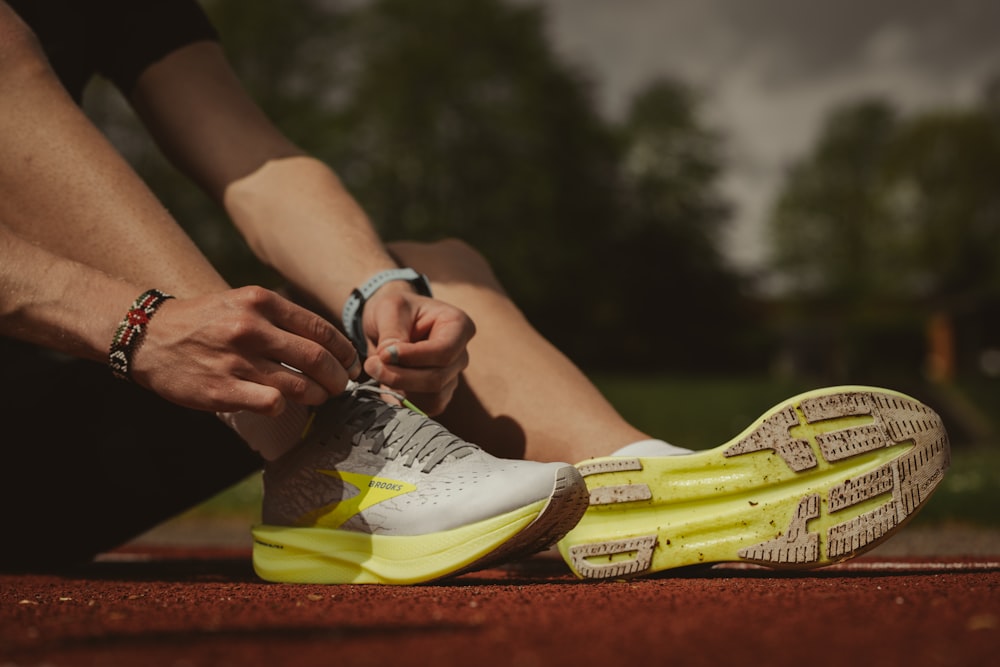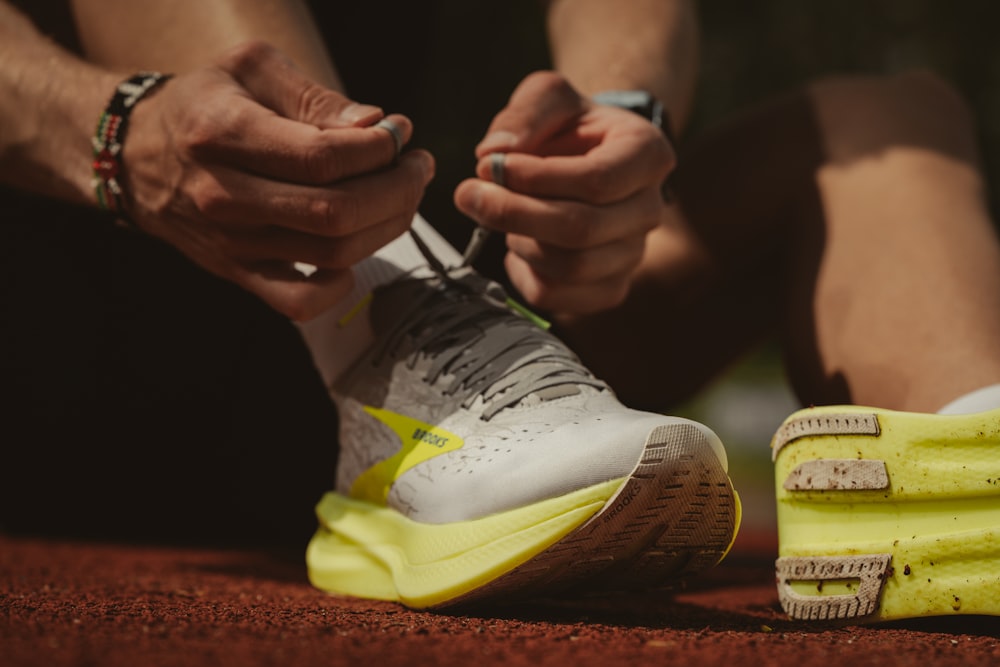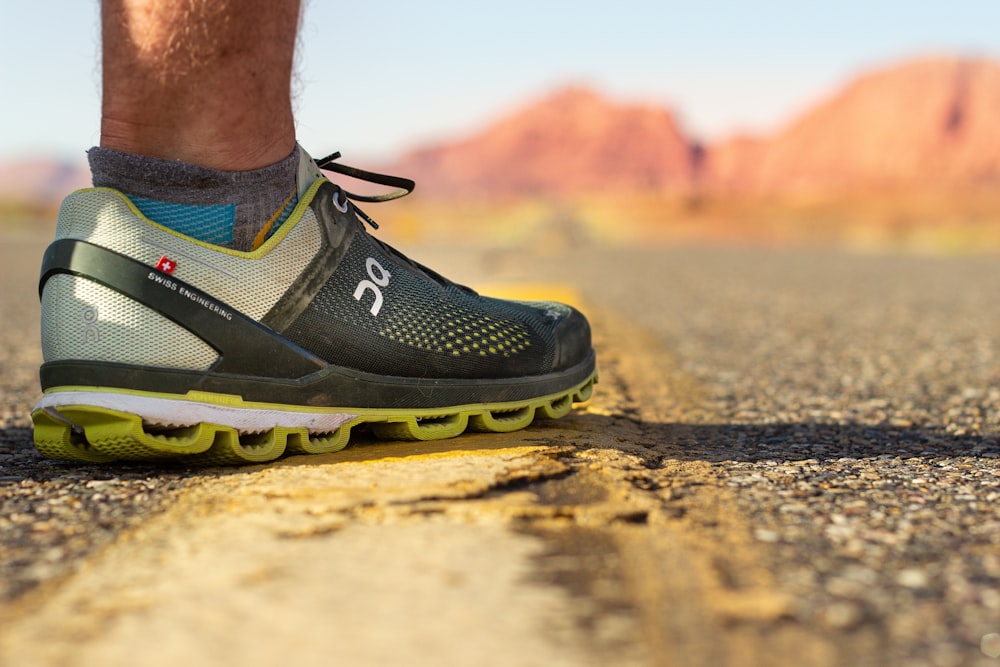The way that you purchase shoes to wear for work or leisure is dependent on how much you will be using them and in what environment. For example, if you are running outside, you will need a shoe with a lot of shock absorption and cushioning. If, however, you work inside in an office environment, it may be best to purchase a shoe with less arch support so that they don’t cause discomfort or pain in your feet when putting in long hours on your feet.
if you are running outside, you will need a shoe with a lot of shock absorption and cushioning. If, however, you work inside in an office environment, it may be best to purchase a shoe with less arch support so that they don’t cause discomfort or pain in your feet when putting in long hours on your feet.

Types of Running Shoes
There are three main types of running shoes: trail shoes, road shoes, and track shoes. Each type of shoe is designed for a different surface and has unique features that make it ideal for that particular surface.
Trail shoes are designed for off-road running on rough or uneven surfaces. They have a number of features that make them ideal for this type of terrain, such as a reinforced toe box to protect against rocks and roots, a lugged outsole for traction, and a water-resistant upper to keep your feet dry in wet conditions.
Road shoes are designed for running on paved surfaces like sidewalks, bike paths, and roads. They typically have a sleek design with a smooth outsole that helps you maintain traction and avoid slips. Road shoes also tend to be lightweight to help you stay agile on your feet.
Track shoes are designed for running on specially designed tracks found at most gyms and some high schools or colleges. These tracks have a cinder or rubber surface that is softer than pavement, so track shoes have cushioned midsoles to protect your feet from impact. The outsoles of track shoes also have spikes or cleats to help you grip the surface and maintain your speed while making turns.
(Photo/ Unsplash)
Considerations When Buying Running Shoes
Running is a great way to get exercise and stay in shape, but it’s important to have the right gear. That includes a good pair of running shoes. In this blog post, we’ll give you some things to think about when you’re shopping for running shoes, so you can find the perfect pair for all seasons.
First, consider what type of runner you are. Are you a casual runner who only goes out a few times a week? Or are you a more serious runner who logs many miles each week? Your needs will be different based on your level of activity.
If you’re a casual runner, you might not need the same level of support and cushioning as someone who runs regularly. You can probably get by with a less expensive pair of shoes. But if you run often or far, you’ll want to invest in a good-quality pair of shoes that will provide support and cushioning to prevent injuries.
It’s also important to think about the climate where you live and run. If you live in an area with harsh winters, you’ll need a different type of shoe than someone who lives in a milder climate. In general, you’ll want a shoe that has good traction for wet weather, but if you live in a rainy area, look for one with a waterproof upper. Make sure that you choose the right size of shoes for your foot. If your shoes are too big or small, they can cause pain and lead to injuries. You should be able to comfortably wiggle your toes at the front of the shoe. Your heel should also fit comfortably into the back of the shoe. When running, your foot should not slide around inside the shoe — this can cause blisters on both sides of the feet. Now that you know how to choose good running shoes, are you ready to get out there and run? Go ahead and lace up those new shoes and hit the pavement!
(Photo/ Unsplash)
How To Care For Your Running Shoes
Assuming that you have already selected the best running shoes for all seasons, it is important to know how to properly care for them. Here are a few tips:
- Store your shoes in a cool, dry place. Avoid exposure to sunlight or excessive heat, as this can break down the materials of your shoes and shorten their lifespan.
- When not in use, stuff your shoes with newspaper or another absorbent material to help retain their shape. This will also help prevent the growth of mold or mildew.
- Clean your shoes regularly with a mild soap and water solution. You can also use a specialized shoe cleaner if desired. Be sure to remove any dirt or debris from the crevices and treads of your shoes to prevent long-term damage.
- Inspect your shoes regularly for signs of wear and tear, such as loose threads, cracks in the sole, or exposed padding. If any damage is found, take steps to repair or replace your shoes as soon as possible.
By following these simple tips, you can keep your running shoes in tip-top shape for many seasons to come!
Which Running Shoes Are The Best For Which Seasons?
As a runner, you know that the type of shoe you wear can make a big difference in your performance and comfort. But did you know that the season can also play a role in which type of shoe is best for you? Here is a guide to help you select the best running shoes for all seasons.
Summer: In the summer, your feet are likely to swell due to the heat. Look for shoes with plenty of breathability to keep your feet cool and comfortable. Mesh uppers or shoes with perforations are ideal. You may also want to consider a lighter-weight shoe to help keep you feeling light on your feet in the heat.
Fall: In the fall, weather conditions can vary widely. You may experience hot days followed by cold, rainy days. A versatile shoe that can handle both extremes is ideal. Look for a shoe with good traction and water resistance so you can run confidently on wet or slippery surfaces. A shoe with extra cushioning will also be appreciated as the pavement tends to be harder in cooler weather.
Winter: In winter, it’s all about warmth and traction. You’ll want a shoe with a water-resistant upper to keep your feet dry in snow or slush. Look for a shoe with a warm lining and extra cushioning to protect your feet from the cold. You’ll want good traction to handle icy sidewalks, wet or icy roads, or snowy running paths.
Trail Running: When you don’t have a road or track nearby, you’ll want to bring along shoes that are specially designed for trail running. With its enhanced gripping ability, increased durability and better support and protection, trail running shoes will help you run safely and comfortably on uneven terrain.
(Photo/ Unsplash)
Conclusion
All in all, there are a few key factors to keep in mind when selecting the best running shoes for the season. With so many different options on the market, it can be tough to know where to start. However, by taking into account your personal preferences and needs, you can narrow down the field and find the perfect pair of shoes for you. So whether you need a shoe that can handle any terrain or one that will keep your feet cool in the summer heat, make sure to do your research before making your purchase.
Source: Free Guest Posting Articles from ArticlesFactory.com



